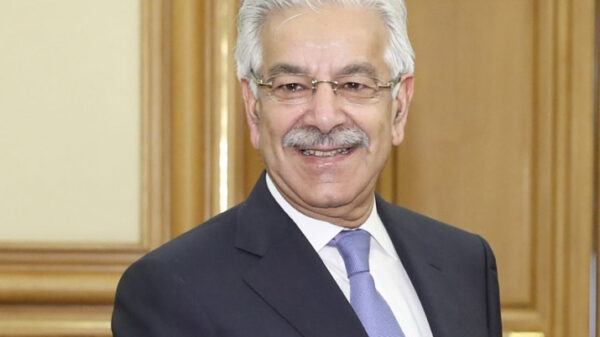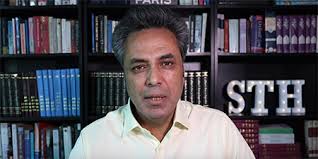The Global Climate Risk Index has placed Pakistan on the fifth spot on the list of countries most vulnerable to climate change. As per the 2020 report, Pakistan lost 9,989 lives, suffered economic losses worth $3.8 billion and witnessed 152 extreme weather events from 1999 to 2018.
And paradoxically, despite emitting less than 1pc of the global emissions, Pakistan consistently remains in the most vulnerable category. In GHG emissions Pakistan stands at a level which corresponds to about one-third of the world average, one-fifth of the average for Western Europe and one-tenth of the per capita emissions in the US, putting it at 135 places in the world ranking of countries on the basis of their per capita GHG emissions.
Jacobabad continued to be the hottest place with 51-degree Celsius maximum tempera- ture. Some areas of northern and western Pakistan usually experience below 0 °C temperature. The coldest place in Pakistan can be the glacial parts of Gilgit Baltistan, where in winters the average temperature remains below -20.
Interestingly, the total rain recorded in Sindh province during the monsoon season of 2018 was just 1 millimeter (0.039 inches), but the very next year it was 323 millimeters (12.7 inches), and in 2020 it totaled 450-500 millimeters. The Arabian Sea has also been heating up, with the average surface temperature increasing from 29 degrees Celsius to 31 degrees in just two years.
This has fueled the formation of storms that push the sea into coastal communities. The Indus River delta has been badly affected by sea intrusion and the problem is being exacerbated by dam construction.
Sea level along the Karachi coast is expected to rise by a further 60 centimeters by the end of the century and will most likely affect the low-lying coastal areas south of Karachi toward Keti Bander and the Indus River delta.
Demand for irrigation water may increase due to higher evaporation rates. Yields of wheat and basmati rice are expected to decline and may drive production north- ward, subject to water availability.
Adapting to these impacts may include: development or use of crop varieties with greater heat and drought tolerance, modernizing irrigation infrastructure and employing water-saving technologies, integrated watershed management, reforestation of catchment areas and construction of additional water storage, diversification of energy mix including investment in renewable and small hydropower projects, improved weather forecasting and warning systems, retrofitting of critical energy infrastructure, and construction of dikes or sea walls.
Pakistan intends to reduce up to 20% of its 2030 projected greenhouse gas emissions, subject to availability of international grants to meet the cumulative abatement costs amounting to approximately $40 billion. The country’s adaptation needs have been identified to range between $7 billion to $14 billion per year.
Pakistan is shifting towards a low carbon economy with a stated goal of shifting 30pc of its energy mix towards renewables and also embarking on an e-mobility transition target- ing 30pc shift [to electric vehicles] by 2030.
The phenomenal increase in the population of Pakistan without corresponding expan- sion in basic amenities of life and infrastruc- ture has exposed a majority of people to conditions, which are far from satisfactory.
In spite of tremendous efforts for reclamation, large tracts of irrigated lands are still lying waste as a result of waterlogging and salinity, mainly in the area where canal irrigation is practised.
The low share of the forest area taken in association with the large population of Pakistan gives only 0.033 hectares per capita compared with world average of one hectare. The challenge is being attempted to be met by planting one billion trees in the shortest possible time.
Thirty-seven species and 14 sub-species of mammals in Pakistan are said to be interna- tionally threatened or near threatened. Among birds and reptiles 25 and 10 species are internationally threatened respectively. Some 500-plant species are also believed to be nationally rare or threatened.
Pakistan’s aquatic resources are also under pressure. As a consequence of reduced water flows, the natural ecosystem of the Indus Delta has been seriously affected by saltwa- ter intrusion due to backwash from the sea.
The country’s current water storage capacity is only 9 per cent of the average annual flows compared to the world average of 40 percent. Therefore, increasing storage capac- ity to conserve floodwater must form an important part of the water policy/strategy.
Based on existing air quality monitoring data, particulate matters (PM) are the main sources of air pollution. Heavy concentra- tions of PM cause a high burden of respira- tory diseases.
Balochistan is said to be the most vulnerable region with high sensitivity and low adaptive capacity followed by low-intensity Punjab (mostly consisting of South Punjab) and Cotton/Wheat Sindh.
Greater incidence of flooding, which may occur due to climate variability, poses the risk of diarrhoea and gastroenteritis; skin and eye Infections; acute respiratory infections; and malaria. Exposure to drought poses potential health risks in the form of food insecurity and malnutrition; anemia; night blindness; and scurvy. Increases in temperature pose health risks of heatstroke; malaria; dengue; respiratory diseases; and cardiovascular diseases.










